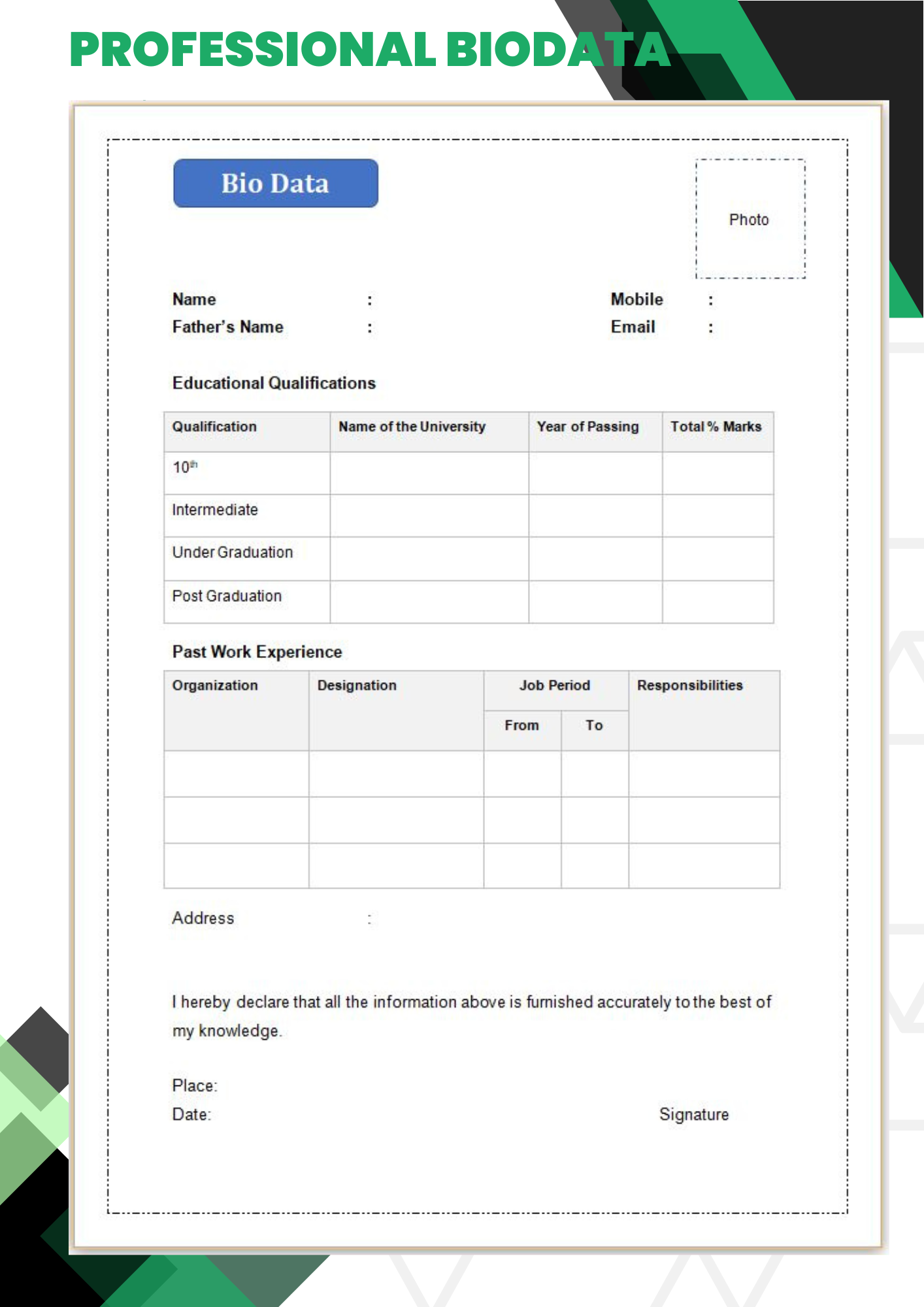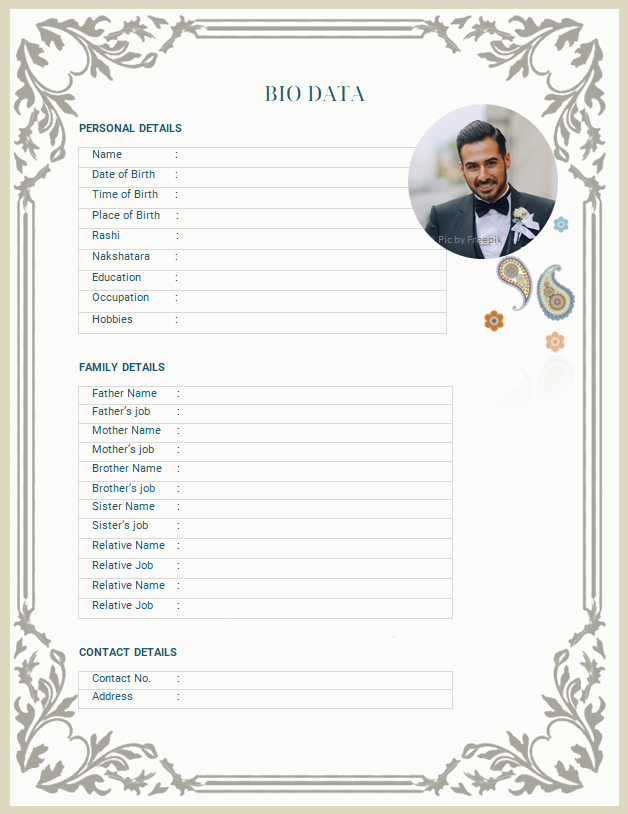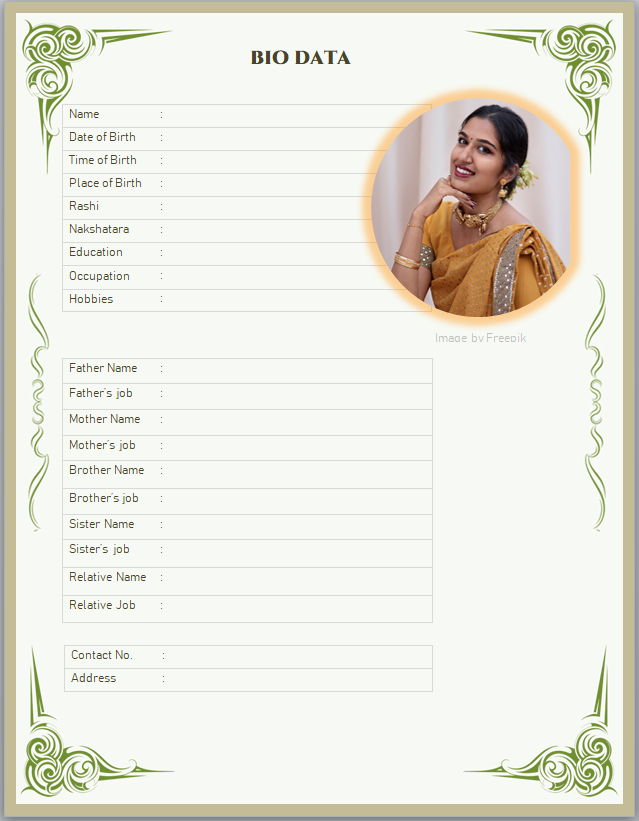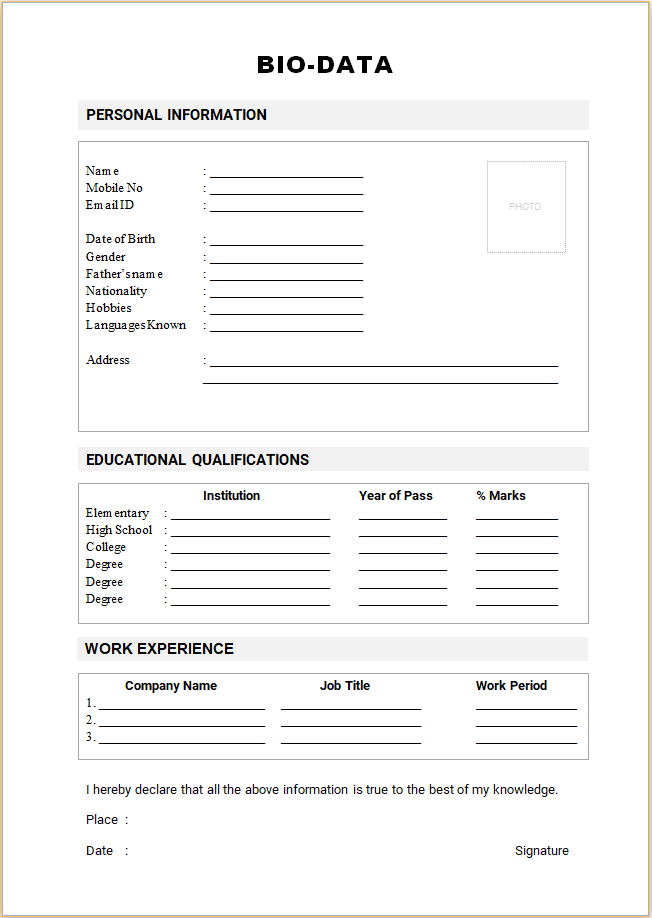Professional biodata for jobs
MS Word biodata format for jobs

Biodata format
If you are an experienced job seeker, the number of work experiences you should include in your biodata depends on the relevance and recency of the experiences.
Generally, it's advisable to include the most recent 3-5 positions, or those spanning the last 10-15 years, depending on your overall work history. Focus on roles that are most pertinent to the job you are currently applying for. Here are details to include regarding your employment history:
Position Title:
Clearly state your job titles for each position. This provides a quick snapshot of your career progression.
Company Name:
Include the names of the companies you've worked for. This gives context to your experience and may add credibility if the employer is familiar with the organizations.
Dates of Employment:
Specify the start and end dates for each position. This information provides a timeline of your professional journey.
Job Responsibilities:
Outline your key responsibilities and tasks in each role. Use bullet points for clarity and focus on the most relevant duties. Quantify your achievements where possible to highlight your impact.
Achievements and Accomplishments:
Showcase specific achievements and accomplishments in each role. Whether it's meeting or exceeding targets, implementing process improvements, or leading successful projects, quantify your successes to demonstrate your contributions.
Skills Demonstrated:
Highlight the skills you demonstrated in each position. This could include both technical skills and soft skills such as leadership, communication, and problem-solving.
Promotions or Advancements:
If you received promotions or advanced in your roles, make sure to mention this. It demonstrates your growth within an organization and your ability to take on increased responsibilities.
Challenges Overcome:
Discuss any challenges you encountered in your roles and how you successfully navigated them. This showcases your problem-solving abilities and resilience.
Education:
Include your educational background, focusing on the highest level of education you've attained. Mention the name of the institution, degree earned, major, and graduation date.
Professional Certifications:
If you have relevant certifications, list them in a dedicated section. Certifications can enhance your qualifications and set you apart from other candidates.
Relevant Volunteer or Freelance Work:
If applicable, include any volunteer work or freelance projects that are relevant to the job you're applying for. This can further demonstrate your skills and commitment to your field.
Professional Memberships:
Mention any memberships in professional organizations that are relevant to your industry. This can show your commitment to staying connected within your field.
While it's essential to provide a comprehensive overview of your work history, focus on the aspects that align with the specific requirements of the job you're pursuing.
Additional Inputs
If you're uncertain about whether to include certain work experiences on your biodata, consider the following advice to help you make an informed decision:
Relevance to the Job:
Evaluate each work experience in terms of its relevance to the job you're applying for. If a particular role aligns closely with the position you're seeking, it's likely worth including. Focus on experiences that showcase skills and accomplishments relevant to the prospective job.
Time Relevance:
Prioritize recent work experiences, especially if you have a long work history. Include positions from the last 10-15 years or those that are most pertinent to your current career goals. Older experiences may be omitted unless they significantly contribute to your qualifications.
Achievements and Impact:
Consider the impact you made in each role. If a particular position allowed you to achieve significant milestones, contribute to projects, or take on leadership responsibilities, it may be worth including. Showcase achievements that reflect your skills and abilities.
Consistency in Career Path:
Examine your career trajectory and the overall narrative you want to present. If a specific work experience contributes to a consistent career path or demonstrates growth and development, it could strengthen your biodata.
Skills Development:
Think about the skills you acquired or developed in each role. If a past position helped you acquire valuable skills that are relevant to the job you're applying for, it's worth mentioning. Highlight transferable skills that can benefit your potential employer.
Avoid Gaps in Employment:
While it's not necessary to include every job you've ever had, be cautious about creating gaps in your employment history. If omitting a particular role creates an unexplained employment gap, consider finding a way to address it in your biodata or cover letter.
Industry Reputation:
If you've worked for well-known or reputable companies, or if you've gained experience in prestigious industries, it may be beneficial to include these experiences. They can add credibility to your professional background.
Ask for External Feedback:
Seek advice from mentors, colleagues, or industry professionals. Sometimes an external perspective can help you assess the significance of a particular work experience in the context of your career goals.
Space Constraints:
Consider the length of your biodata. If you have limited space and need to keep the document concise, prioritize the most relevant and impactful work experiences. Trim down details from less relevant roles to make room for crucial information.
Tailor for Each Application:
Remember that your biodata should be tailored for each job application. Emphasize experiences that align with the specific requirements of the position you're applying for.
Customize your document to showcase the most relevant aspects of your career.
Ultimately, the goal is to present a biodata that effectively communicates your qualifications and makes you a strong candidate for the job. Select experiences that contribute positively to this goal and create a cohesive narrative of your professional journey. If in doubt, focus on quality over quantity, emphasizing the depth of your experiences rather than listing every job you've held.


